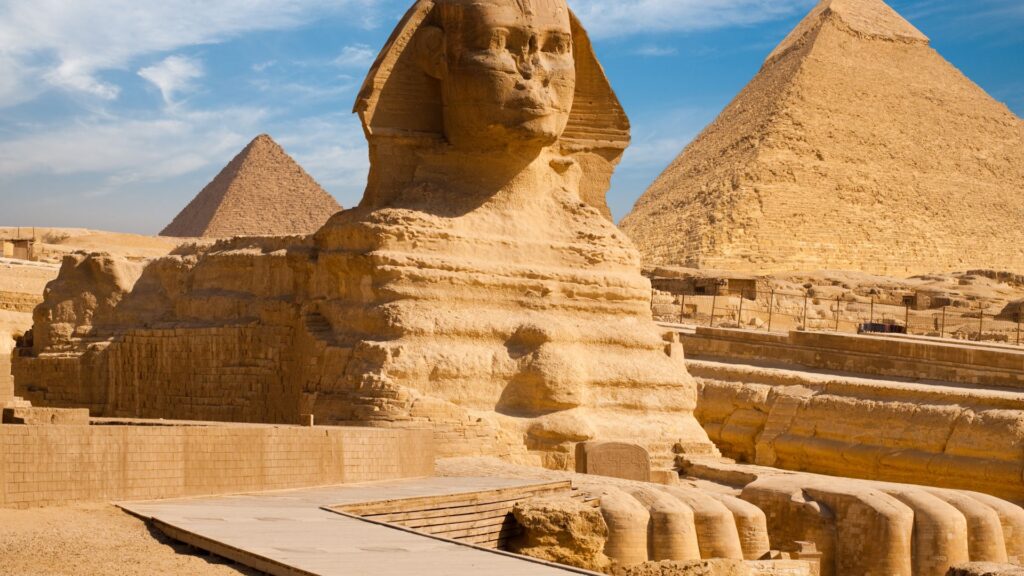Luxor, located in the Muḩāfaz̧at al Uqşur region of Egypt, is a city rich in history and culture. Known as the "world's greatest open-air museum," Luxor is home to some of the most impressive ancient Egyptian ruins and monuments, including the Karnak Temple and the Valley of the Kings.
One of the most iconic sites in Luxor is the Luxor Temple, a stunning temple complex dedicated to the god Amun-Ra. The temple is beautifully preserved and showcases intricate hieroglyphics and statues that tell the stories of ancient Egyptian mythology.
Another must-see attraction in Luxor is the Valley of the Kings, where many pharaohs were buried in elaborate tombs carved into the rock. The most famous tomb in the valley is that of King Tutankhamun, whose tomb was discovered nearly intact in 1922 by archaeologist Howard Carter.
Luxor is also a popular destination for hot air balloon rides, offering visitors a unique perspective of the city and its surrounding landmarks. The Nile River runs through Luxor, providing picturesque views and opportunities for leisurely boat rides.
In addition to its historical sites, Luxor offers a vibrant marketplace where visitors can shop for souvenirs, spices, and local handicrafts. The city is also known for its delicious Egyptian cuisine, including traditional dishes like koshari, falafel, and baklava.
With its fascinating history, stunning architecture, and lively atmosphere, Luxor is a must-visit destination for anyone interested in exploring the wonders of ancient Egypt.
What to explore:
1. Karnak Temple Complex: One of the largest temple complexes in Egypt, Karnak is a must-visit for its impressive columns, statues, and obelisks. Explore the Great Hypostyle Hall, the Sacred Lake, and other ancient structures.
2. Valley of the Kings: The final resting place of many pharaohs and nobles, the Valley of the Kings is known for its intricately decorated tombs. Visit the tombs of famous rulers such as Tutankhamun and Ramses II.
3. Luxor Temple: Situated in the heart of Luxor, this well-preserved temple complex dates back to the New Kingdom period. Admire the colossal statues, ancient hieroglyphs, and intricate carvings.
4. Hatshepsut Temple: Dedicated to the female pharaoh Hatshepsut, this temple is known for its unique architectural design and stunning reliefs. Enjoy panoramic views of the surrounding landscape from the terraces.
5. Colossi of Memnon: These two giant statues of Pharaoh Amenhotep III are all that remains of his mortuary temple. Visit at sunrise or sunset for a memorable photo opportunity.
6. Luxor Museum: Explore a collection of artifacts from Luxor and the surrounding area, including statues, pottery, jewelry, and mummies. Highlights include the mummy of Ramses I and the beautifully preserved statue of Tuthmosis III.
7. Medinet Habu: This vast temple complex is dedicated to Pharaoh Ramesses III and showcases impressive reliefs, hieroglyphs, and statues. Don't miss the well-preserved Mortuary Temple of Ramesses III.
8. Deir el-Medina: A well-preserved ancient village that once housed the artisans and workers who built the tombs in the Valley of the Kings and Valley of the Queens. Explore the houses, workshops, and tombs of the villagers.
9. Ramesseum: The mortuary temple of Pharaoh Ramesses II, the Ramesseum is known for its massive statues and impressive architecture. Take a stroll through the ruins and imagine its former glory.
10. Luxor Souk: Wander through the bustling market streets of Luxor Souk and browse a wide variety of goods, including spices, textiles, jewelry, and souvenirs. Don't forget to haggle for the best prices!
